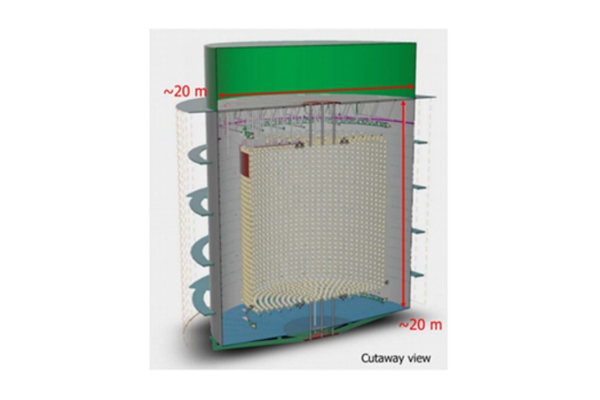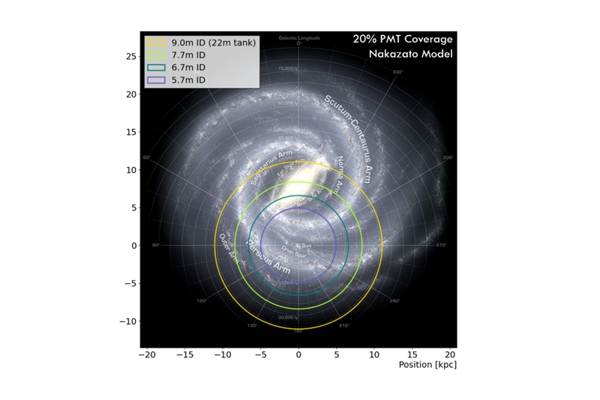Supernova model discrimination with a kilotonne-scale water Cherenkov detector

LIV.DAT student Adam Tarrant works on developing water Cherenkov detectors which are used to detect neutrinos. One of these detectors is the proposed WATCHMAN detector and a paper recently published in the Journal of Cosmology and Astrophysics explores how this detector can be used to discriminate between different supernova models by looking at neutrinos spectrum for a core collapse event.
WATCHMAN, a cylindrical kilotonne-scale water Cherenkov detector, has been developed to detect reactor antineutrinos through inverse β-decay for non-proliferation applications but also has the ability to observe antineutrino bursts of core-collapse supernovae within our galaxy.
Detector configurations with sizes ranging from 16 m to 22 m tank diameter and 10% to 20% photo-multiplier tube coverage were used to compare the expected observable antineutrino spectra based on the Nakazato, Vartanyan and Warren supernova models. These spectra are then compared to each other with a fixed event count of 100 observed inverse β-decay events and a benchmark supernova at 10 kpc distance from Earth. By comparing the expected spectra, each detector configuration’s ability to distinguish between them was evaluated.

Effective range of detector superimposed on the Milky Way, using the Nakazato model and a detector PMT coverage of 20% (right). Galaxy image reproduced from NASA/JPL-Caltech/R. Hurt (SSC/Caltech) CC BY 4.0.
It was demonstrated that the total fiducial volume and, by extension overall tank size, is the most important factor to its performance to observe and extract physics information from a core-collapse supernova. This study shows that an application-driven antineutrino detector of sufficient size (18 m or larger in diameter) in a low background environment is capable of making useful measurements at the commonly used benchmark distance of 10 kpc, a distance within which approximately half of the supernova progenitors in our galaxy can be found.
The analysis then demonstrates that the detector design is capable of meaningful event discrimination (90+% accuracy) with 100 observed supernova antineutrino events in most configurations. Furthermore, a larger tank configuration can maintain the performance at 10 kpc distance and above, indicating that overall target mass is the main factor for such a detector’s discrimination capabilities.
Additionally, the results show that the detector is capable of observing a significant number of events from a core-collapse supernova within the Milky Way. As a result, WATCHMAN is capable of acting as an early warning system, an important feature for the purpose of multi-messenger astronomy.
This study demonstrates that, in addition to its original non-proliferation application, the WATCHMAN detector concept is a useful multipurpose platform for ongoing fundamental physics and science collaboration. Furthermore, as this study shares its analysis and reconstruction tools with the reactor antineutrino-based tools, it highlights their versatility for use in liquid-based detectors but also means that a dedicated reconstruction optimised for supernova events may yield future improvement of these results.
The published paper can be found here
*Image: Schematic cutaway view of the WATCHMAN detector concept by Jan Boissevain (University of Pennsylvania), showing the outer tank wall, the array of PMTs and the inner volume enclosed by the PMTs support structure